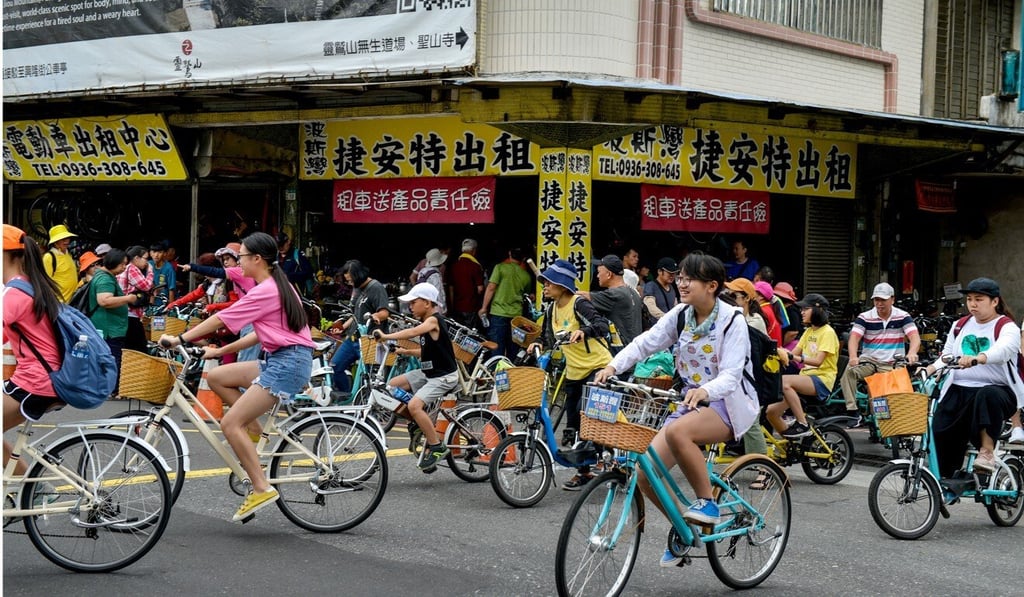How a disused railway tunnel became a draw for Taiwanese holidaying on the island because of the Covid-19 pandemic
- No trains have used the Caoling railway tunnel since the 1980s, but every weekend, thousands of cyclists pass through it
- The interior of the 2.1km tunnel is 10 degrees cooler than outside, making it ideal for a summer ride, whether on a racing bike, tandem or e-bike

The Caoling railway tunnel was decommissioned more than 30 years ago, but has never seen so much traffic. The 2.1km tunnel, on Taiwan’s rugged east coast, is proving a hit with locals forced by coronavirus restrictions to holiday domestically, especially on the weekends.
The tunnel attracts as many as 2,400 cyclists every Saturday and Sunday, says Deng Kuang-jung, of the Northeast Coast and Yilan National Scenic Area Administration.
In fact, the cool tunnel air and the adrenaline rush of a flattish half-hour ride have proven so irresistible that volunteers enlisted by the administration sometimes have to ask riders to stop before entering the tunnel and wait until the traffic inside thins out, Deng says.

The owner of one of them, Lin Po-ching, tells us why the tunnel is so popular: “You get to the entrance and it’s 22 degrees Celsius, so it’s fun to stop – and comfortable.” Winds from the south cool the tunnel, keeping the temperature about 10 degrees lower than outside.